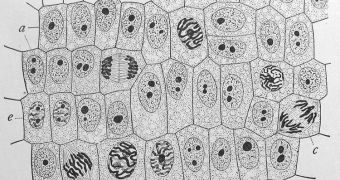Scientists have always known that cells in the human body can determine their own fates to some extent, in the sense that they can send self-destruct signals if need arises, for example. Now, experts find that cells are more in control of themselves than anyone dared to imagine.
The new investigation was primarily focused on B cells, a type of cells belonging to the immune system that play an important role in forming antibodies. The study was led by experts with the Walter and Eliza Hall Institute's Immunology division.
Researchers with the group were able to demonstrate that B cells were capable of controlling their own existence, even if only to a limited extent. What the team determined is that internal processes going on inside these cells are responsible for changes the cells suffer on the outside.
This is a point of view that differs significantly from the commonly-held one, which says that external factors in the human body are responsible for changes in cells' structures and functions. Some of these factors include certain hormones and cell-signaling molecules.
While this is also true, the team was able to discover that B cells tend to listen to themselves as well, when it comes to dying, dividing, turning into different types of cells, or changing the type of antibody they are producing.
The research group was led by professor Phil Hodgkin, the head of immunology at the Walter and Eliza Hall Institute, and included collaborators Dr. Mark Dowling, Dr. Cameron Wellard and Ms. Jie Zhou.
National Information and Communications Technology Australia expert Dr. John Markham helped the team film the cells during experimental setups. The WEHI group created scenarios in which the conditions that normally lead to changes in B cells were perfectly replicated.
“A reliable proportion of the B cells would end up with each of the different fates. This suggests that external factors such as hormones or cell signaling molecules were not telling the cells what to do but were altering the probability of what the cells were going to do anyway,” Hodgkin explains, quoted by Science Daily.
He and the team looked at more than 2,500 cells as they were deciding which course of action to take. One of the most important conclusions was that each cell tries to be all that it can be simultaneously, and that only one scenario prevails.
Details of the study were published in the latest issue of the top journal Science. The National Health and Medical Research Council of Australia, the Victorian Government and Science Foundation Ireland provided the funds needed for the investigation.

 14 DAY TRIAL //
14 DAY TRIAL //